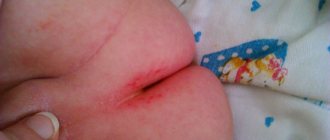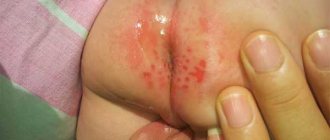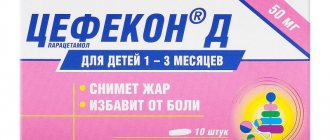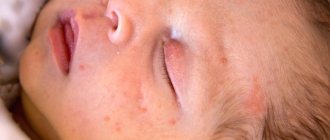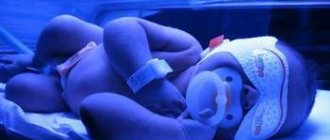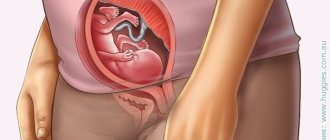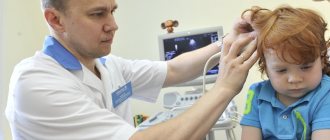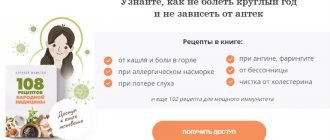Pinworms in children - what is it?
Pinworms are a type of roundworm that parasitizes the intestines of humans and chimpanzees. The disease is called enterobiasis in medicine. This means that these parasites, living inside the child, feed on his juices, without giving anything in return.
Externally, the helminth is round in shape with pointed ends and has a grayish-white body. Due to its shape and fairly mobile body, the pinworm is able to quickly move through the intestines.
Parasite dimensions:
- male – 2-5 mm;
- female 9-12 mm.
The female lays eggs measuring 0.03-0.03 mm, which are oval in shape. Only one individual can deposit up to 15 thousand of them on the skin.
Treatment of pinworms in children under 2 years of age
Parasites can be found in any person. But it is much easier for them to penetrate an organism that is not yet fully formed, because its immune system cannot fully resist foreign agents. Therefore, worms are detected in children much more often than in adults. The most common helminthiasis is enterobiasis. But what kind of disease is this and how to treat pinworms in 2-year-old children?
Enterobiasis: factors of occurrence and symptoms in a child
Have you been trying to get rid of PARASITES for many years?
Head of the Institute: “You will be amazed at how easy it is to get rid of parasites by taking every day...
Read more "
This type of helminthiasis is widespread everywhere. Its occurrence is promoted by a gray-white worm, up to 12 mm long. The parasite chooses the human intestine as its habitat. And to lay eggs, the female crawls into the anal area.
Young children become infected with enterobiasis after contact with each other. After all, an invasive child cannot tolerate the itching and scratches the skin near the anus, after which pinworm eggs remain on his hands, which he spreads to surrounding objects and toys.
If parents have not enrolled their two-year-old child in kindergarten, they still cannot be sure that there is no danger of infection. Since parasite eggs can be found on clothes, linens, and even in house dust.
Attention: the incubation period for helminthiasis caused by pinworms in children is up to 6 weeks.
The symptoms of enterobiasis depend on many factors. Its intensity is influenced by the scale of invasion, the level of immunity, the individual reaction of the person’s body and, of course, his age. But most often the disease is accompanied by severe itching around the anus. It can last up to 4 days and then disappear for several weeks.
During this time period, a new generation of pinworms grows, and then reinvasion occurs.
The consequences of long-term worm parasitism in children can be as follows:
Routes of infection in children
Ways of penetration of parasite eggs into the child’s body:
- unwashed hands;
- drinking raw water;
- through unwashed fruits and vegetables.
Once in the small intestine, mature eggs - larvae - attach to its walls and after 20 days they turn into adults, which move to the large intestine. There they parasitize for 1-1.5 months.
Males die in the colon after fertilizing females. Females, filled with eggs, begin to move towards the anus, where they produce offspring and also die. If a child touches the place where the eggs are located, they will instantly stick to his hands, then after his hands touch his mouth, the larvae safely re-enter the human body. And a new cycle of parasitism begins.
Pinworm eggs can remain on other objects - toys, bedding and underwear, household items - for three weeks.
Causes and mechanism of infection
The cause of enterobiasis in children is pinworms. This is the most common helminth throughout the globe. It parasitizes both adults and children. In appearance, these are elongated thread-like parasites . Females have a length from 8 to 14 mm, males from 2 to 4.
The only source for further invasion are people. Worms parasitize in the final sections of the large intestine. Males die immediately after fertilizing females. After mating, the females crawl out of the rectum (this action occurs during sleep) and lay eggs in the folds of the child’s anal area. For the development of worm eggs, access to oxygen is necessary. After laying, the females die and are excreted in feces, but it is difficult to notice them with the naked eye. 3-7 hours after laying, worm eggs reach maturity and can infect other people.
Due to discomfort and irritation, children reflexively scratch their skin. At the same time, mature worm eggs get on the fingers. According to this mechanism, the child is re-infected with parasites (fecal-oral route).
IMPORTANT! To stop reinfestation by worms, it is necessary to monitor the child’s hygiene, constantly wash his hands, clean the perineum and anal folds. It is also important to trim your nails on time, since helminth eggs can be found there too.
In addition to the fact that the child himself ingests parasites, he can spread them among household items, and thereby provoke infection of other family members. After pinworms enter the intestines, it takes 10-15 days for them to reach puberty. During this time there are no symptoms. On average, helminths that cause enterobiasis live 3-5 weeks.
Pinworms in children - symptoms
The following manifestations of the body may indicate pinworms:
- The appearance of severe itching in the anal area. It usually gets worse at night.
- When falling asleep, the child becomes very capricious, even to the point of hysterics.
- Parents may notice how every time before bed the baby tosses and turns in the crib and fidgets.
- Frequently touching private parts that cause itching.
As a result of the activity of pinworms in the body, the child develops digestive disorders in the form of constipation, diarrhea or bloating. Pain in the intestines is cramping in nature. Appetite suffers, fatigue occurs quickly, and the skin turns pale.
It happens that the larvae migrate into the lung tissue. At this time, children begin to cough.
Parents should take a good look at their child's stool; small worms can usually be found in them.
Manifestation of the disease
The main characteristic symptom of enterobiasis is severe itching in the anus and discomfort. The child has trouble falling asleep, fidgets on the bed all the time, and may wake up crying.
Enterobiasis may have other signs:
- morning sickness:
- persistent constipation, which may be replaced by loose stools;
- lack of appetite;
- sleep disturbance;
- swelling and bluish circles under the eyes;
- pain in the central abdominal area.
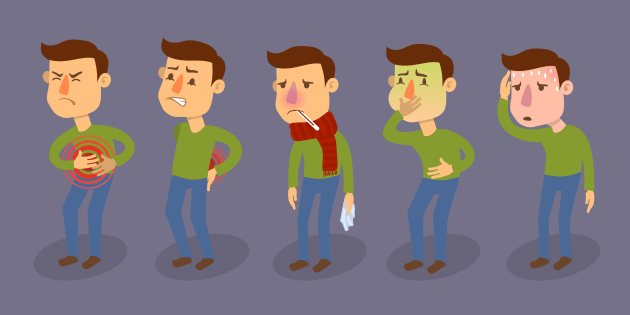
If treatment is not started or treated incorrectly, complications may occur in the form of enterocolitis, inflammation of appendicitis, intestinal obstruction, and peritonitis. In girls, pinworms can crawl into the genitals, causing numerous diseases.
Drug treatment
When treating enterobiasis, it is necessary to take a comprehensive approach to the problem, since even taking medications, it is impossible to completely get rid of the disease until there is no hygiene in the house and the parents teach the child to keep their hands and their actions clean.
Drug therapy consists of a sharp effect of medications on helminths over a short course. Usually the first dose is taken as one tablet per day, then repeated after two weeks. Such therapy rarely negatively affects the child’s entire body.
The most commonly used drugs are:
- Pyrantel, its analogues are Helmintox, Nemotsid, etc. Due to the absence of obvious adverse reactions, the drug is recommended for use even by children from 6 months. It is better for young children to take the product in the form of a suspension. Depending on the age of the patient, a certain amount of medication is prescribed, most often it is one tablet per day, taken in the evening, before bed.
- Vermox (Mebendazole) is a stronger drug, and therefore its degree of toxicity is slightly higher than Pyrantel. But if you strictly follow all the indicated dosages, then there should be no problems. A single dose of medication against nematodes is also indicated.
We recommend: Barking cough in a child
What should parents do?
If symptoms of enterobiasis appear, you must visit a pediatrician; only a specialist, based on the test results obtained, can confirm or refute the diagnosis.
It is strictly forbidden to select medications on your own - antiparasitic drugs are very toxic, and serious complications can occur if the dosage is incorrectly calculated.
Fecal analysis for enterobiasis is ineffective, since eggs do not always end up in feces - the collection of material must be carried out three times immediately after emptying.
To obtain a more accurate picture, use adhesive tape, which is glued to the anus, and then examined under a microscope. You can use a cotton swab lubricated with Vaseline - it needs to be rubbed along the folds, and then taken to the laboratory.
How to properly scrape a child in the video of Dr. Malysheva:
Medicines for a child up to one year old
Most antiparasitic drugs are not suitable for treating children under one year of age due to their high toxicity and extensive list of side effects. Even a small dose of medicine can cause significant damage to a fragile and weakened body.
But it is necessary to treat enterobiasis, because against the background of parasite infection, the child does not receive enough nutrients, which negatively affects his development.
What antiparasitic drugs can be used to treat enterobiasis in infants:
- Piperazine is the least toxic drug in the form of a suspension. The doctor calculates the dose based on the child’s weight and general condition. The main contraindications are pathologies of the kidneys and nervous system. Duration of therapy – 5 days.
- Pyrantel is a suspension for the treatment of enterobiasis with a pleasant taste; after taking the medicine, parasites lose the ability to move, attach to the walls of internal organs, and leave the body naturally.
In addition to suspensions and tablets, children are often prescribed suppositories - Prostada , Gelmavitol , they contain natural ingredients, have a detrimental effect on pinworms, and act locally. To reduce itching, you need to lubricate the anus with a moisturizer or zinc ointment.
Since pinworm eggs are quite tenacious, antiparasitic therapy should be carried out 2-3 times with an interval of 7-14 days.
Is it worth experimenting with traditional methods?
Alternative medicine is less toxic than drugs, but not as safe and effective as many parents believe. Before using enemas or decoctions, you should definitely consult your doctor.
Garlic enemas, a decoction of tansy or wormwood are dangerous to use to treat children under one year old - such procedures can provoke severe allergic reactions, damage to the mucous membranes, and the addition of a bacterial infection.
Safe methods of alternative treatment - carrot juice, pumpkin or flax seed oil can be used to treat enterobiasis in children older than six months. Most pediatricians recommend wisely combining traditional and folk methods in the treatment of enterobiasis. But the key to a quick recovery lies in strict adherence to hygiene rules by all family members.
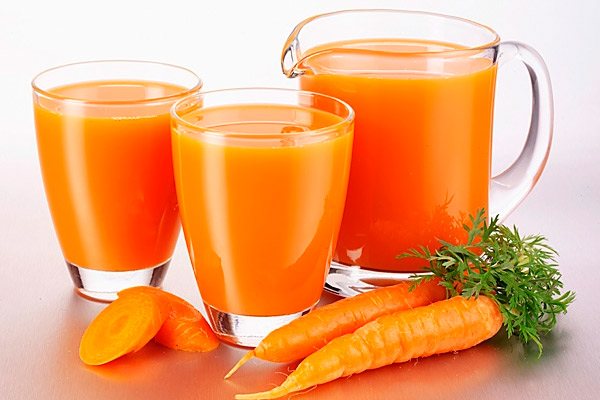
Enterobiasis cannot be ignored - against the background of helminthic infestation, young children develop anemia, epilepsy, enterocolitis, and allergies. Inflammation of the appendix may occur, and sometimes vision problems occur.
Treatment with folk remedies
Traditional therapy knows many effective and inexpensive recipes for getting rid of pinworms. In particular, they can benefit children who suffer from allergies and cannot tolerate all medications.
The following medicinal herbs and plants have anthelmintic effect:
- birch buds and leaves;
- immortelle;
- valerian;
- watch;
- elecampane;
- oregano;
- St. John's wort;
- centaury;
- tansy;
- wormwood, etc.
It is advisable to take onions and garlic, both fresh and in the preparation of certain recipes.
The most popular and effective of them are the following:
- 30-40 g of pumpkin seeds are mixed with honey to make a paste. The child should eat this remedy on an empty stomach, and an hour later take any laxative.
- The combination of garlic and milk gives a positive result in the treatment of enterobiasis. The product is taken both internally and for preparing enemas. For oral administration, mix several crushed cloves of garlic with half a glass of milk. This dosage is taken three times every day - morning, afternoon and evening. To make an enema you will need 10 garlic cloves and 100 ml of milk, the mixture is simmered over low heat for 5 minutes. When the liquid has cooled, it is filtered and the child is given an enema at night.
- For older children, you can prepare a paste from a mixture of blueberries, chopped elecampane root and honey. The ratio will be as follows: 5 g blueberries, 5 g elecampane root, 1 spoon of honey. The medicine is taken on an empty stomach. This product should not be given to children under 6 years of age or to those who are allergic to any of the ingredients in this recipe.
How to treat pinworms in children
Only a doctor can treat enterobiasis, so contacting a specialist is mandatory. The sooner a diagnosis is made, the sooner parents can learn how to get rid of pinworms in their child. White worms in feces may not be noticeable, so you will need to focus on the symptoms that appear.
A deworming agent is prescribed only by a doctor, having studied all the characteristics of the child’s body. Both broad-spectrum drugs and those that are aimed specifically at treating roundworms can be used.
When selecting medications, the doctor will also take into account contraindications, calculate the dosage and form of taking the medication. It will be necessary to do everything that the doctor says, then the treatment can be effective, and the drugs used will bring more benefit than harm.
Pinworms in children treatment
How to treat pinworms with tablets
Pyrantel – the active ingredient is pyrantel. The drug is prescribed for the treatment of worms, as well as for the prevention of enterobiasis in children. The release form is tablets and suspension. Treatment of pinworms in children with this drug gives a good, lasting result. However, usually the doctor forces you to do the test twice and take pinworm tablets again to confirm the result.
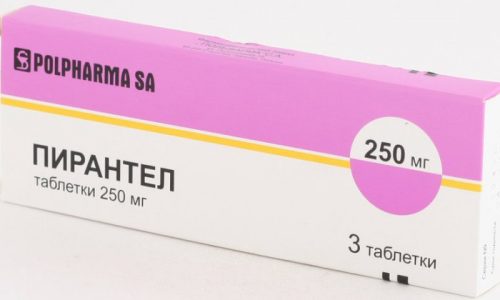
For children under three years of age, experts recommend using the suspension. After the age of three, worms are also removed using tablets. The suspension is easier to tolerate by children, and therefore does not have such strong side effects as tablets. In extreme cases, nausea and weakness are possible, which quickly passes without the need to use additional means to eliminate the symptoms that appear.
Contraindications:
- individual intolerance to the components of the drug;
- nervous exhaustion, nervous tension;
- muscle weakness.
The dosage and method of administration are prescribed by the doctor. In case of overdose, you need to use symptomatic therapy and call a doctor or seek help from a specialized institution.
As a preventive measure and to prevent infection, your doctor may prescribe pyrantel twice a year. The dosage is again prescribed by the doctor, but usually it coincides with the dosage prescribed during the treatment itself.
Reviews from patients indicate that this drug is quite effective and one of the best possible drugs on the market.
Nemozol
This drug blocks the nerve endings of the worms, thereby stopping their feeding and ability to move. After the cessation of vital activity, individuals are eliminated from the body naturally.
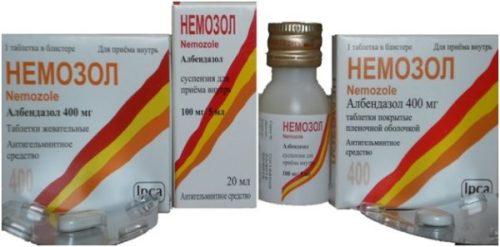
Treatment with this drug is recommended for all family members simultaneously. The duration of therapy and medication cycles vary. Only a doctor prescribes the dosage and method of administration.
Side effects:
- headache, severe migraines;
- dysfunction of the nervous system;
- skin rash, itching;
- renal and liver failure;
- allergic manifestations.
Contraindications:
- retinal damage;
- pregnancy, lactation.
Candles for pinworms for children
Suppositories for children against pinworms are more popular than tablets, as they are less toxic. In addition to children, such suppositories can be used by pregnant women, as well as those mothers who are breastfeeding. The effect of suppositories appears faster than that of tablets, which is an important advantage when choosing treatment. Candles are excellent for people with weakened immune systems. Usually suppositories are taken for five days. The dosage is prescribed by the doctor, as well as a prescription for suppositories. Most candles are made on a plant basis, which does not harm the body.
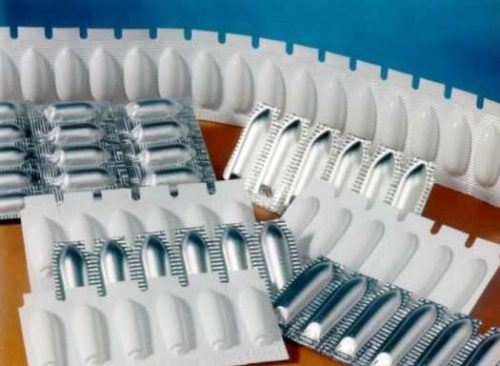
Suppositories that your doctor may prescribe
Gelmavitol is a herbal preparation containing extracts of tansy, garlic and milk thistle. Thanks to its plant base, the drug is well tolerated by patients, especially pregnant women and children.
Vormil is a suppository with the active ingredient being albendazole. Suppositories should not be used by children under 2 years of age, pregnant women, or during lactation. The rest of the group of children and adults respond well to this medicine.
Nigella Sativa is not just a suppository for pinworms, but a remedy that can strengthen the immune system. This suppository should be used for children over 6 years of age.
Why are pinworms dangerous?
Despite the fact that pinworms are the most harmless of all types of helminths, if they remain in the body for a long time, the following complications can begin:
- Penetration of parasites into the uterus, fallopian tubes or vagina, which will provoke an inflammatory process in this area. And for little girls this can be extremely dangerous.
- With a large accumulation of pinworms in the cecum, inflammation of the appendix can begin.
- If parasites penetrate the bile ducts or liver. The functioning of these organs may be disrupted.
- In extreme cases, pinworms penetrate the abdominal cavity, which can even pose a threat to life.
Enterobiasis in young children is often accompanied by a skin rash. And under the influence of weak immunity, vitamin deficiency and a lack of various useful minerals, the child begins to get sick more often, which further undermines the immune system.
Danger
You should not assume that a pinworm that develops on the butt is a harmless helminth. Pinworms in children can cause serious disturbances in the intestinal microflora, thereby developing dysbacteriosis. The immune system cannot cope with the disease, as a result: allergic reactions and skin rashes occur. Without medical help for a long time, bronchial asthma may develop.
You may also be interested in: What should pregnant women do if pinworms are detected?
When pinworms enter the vagina, they cause vaginitis in children and cause serious gynecological diseases. In addition, worms in humans can settle in the biliary tract and liver, causing severe mechanical damage and inflammatory reactions. At night, when the sphincter is as relaxed as possible, females crawl out of the anus to lay eggs. In this case, the patient feels severe itching, which is disturbing and interferes with sleep and human health.
To avoid complications, you need to contact the clinic to prescribe a treatment regimen.
Komarovsky about enterobiasis
Sometimes pinworms even affect infants who come into contact with sick people. Sometimes the mother herself becomes a source of infection, especially if she feeds her baby breast milk.
Pinworms can cause great damage to a child’s body because they suck out beneficial juices from the intestines, which come with food. As a result, the baby develops poorly both mentally and physically.
It can be difficult for parents to determine the presence of enterobiasis in a child under 1 year old; it is important to pay attention to the following symptoms:
- weight loss or slight gain of kilograms for no particular reason;
- poor sleep;
- constant crying, especially in the evening;
- pale skin, dark circles around the eyes;
- If you examine the baby's stool, you can find white worms in it.
If all these signs are present, the parents’ task is to urgently contact a pediatrician so that he can conduct an examination and prescribe the necessary treatment.
Prevention of pinworm infection
Preventive measures will be as follows:
- Compliance with personal hygiene rules.
- Before a child enters a kindergarten or school, it is necessary to conduct strict sanitary and epidemiological control and a medical examination.
- Employees of child care institutions must also be tested annually for the presence of enterobiasis.
- Timely treatment of sick and contact children in compliance with the required doses and timing.
- Health education conversations with children.
Today, getting rid of worms is not difficult. It is more important to eliminate provoking factors. This is especially true for young children, who can suffer significantly from enterobiasis.

